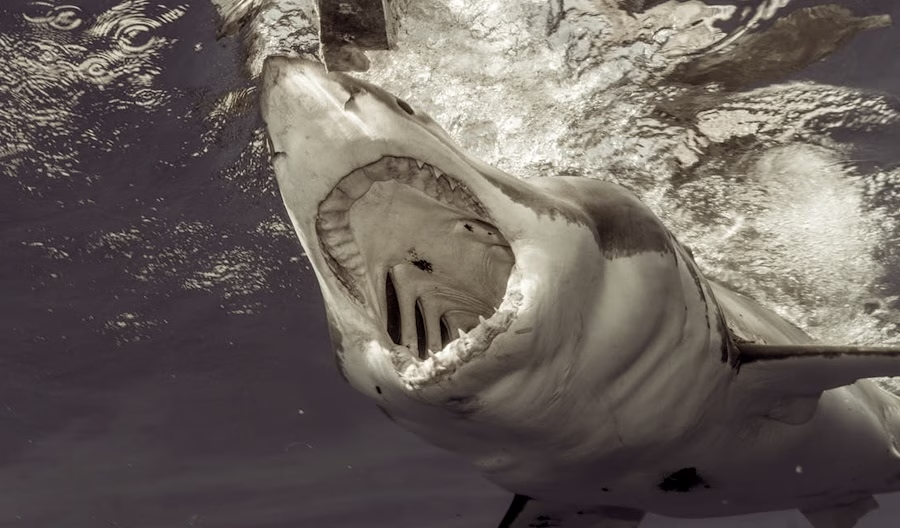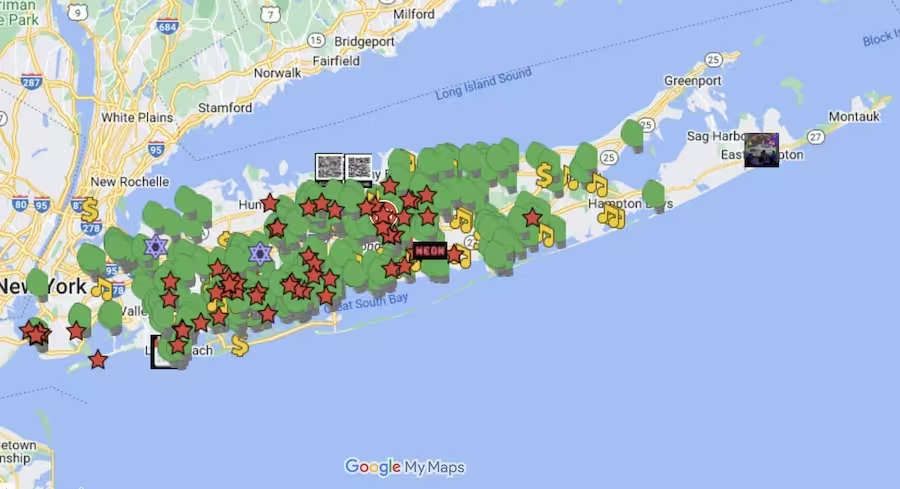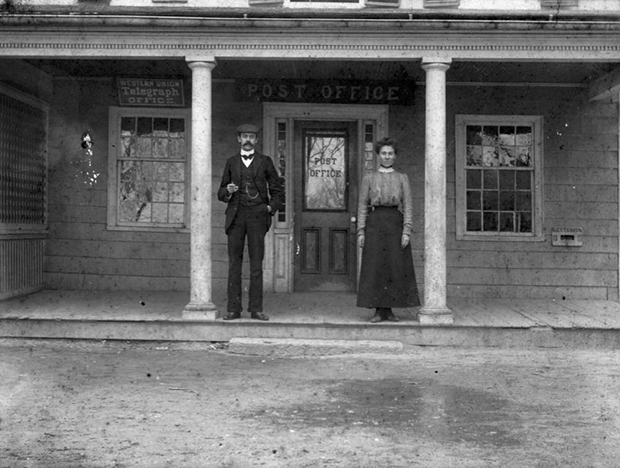The summer of 1916 was marked by terror along the shores of the northeastern United States, as a series of shocking shark attacks made national headlines. These events not only created a media frenzy but also became the foundation for Peter Benchley’s novel Jaws and the blockbuster movie that followed. While most of the attacks occurred off the coast of New Jersey, there’s a compelling connection to Long Island that often goes overlooked.
Here’s a look at the facts surrounding the infamous shark attacks of 1916 and their Long Island connection:
Facts About the 1916 Shark Attacks
- The Timeline of Terror
Between July 1 and July 12, 1916, four people were killed, and one was seriously injured in a series of shark attacks along the Jersey Shore and an inland creek. These attacks marked the first recorded instances of multiple fatal shark attacks in U.S. history.
Source: Smithsonian Magazine - The Long Island Connection
Just days after the final attack in New Jersey, sharks were sighted in the waters off Long Island’s South Shore. Reports from places like Fire Island and Rockaway Beach described large sharks near bathing areas, sparking widespread panic. Many Long Island towns responded by setting up shark nets and issuing public warnings. - Public Reaction on Long Island
Following the 1916 attacks, Long Island communities held public meetings to discuss beach safety, leading to the establishment of some of the first local marine patrols.
Source: Smithsonian Magazine - The Media Frenzy
Newspapers sensationalized the attacks, dubbing sharks as “man-eating monsters.” The fear quickly spread to Long Island, where beaches saw reduced attendance despite the prime summer season. Headlines from The Brooklyn Daily Eagle and The New York Times specifically warned Long Island residents about potential shark dangers.
Source: The Brooklyn Daily Eagle, 1916 - The Hunt for the Culprit
Fishermen along the Jersey Shore and Long Island organized hunts to catch the “rogue shark” responsible. On July 14, 1916, a great white shark was caught near Matawan Creek, New Jersey, with human remains reportedly found in its stomach. This capture further fueled fear in Long Island communities. - Shark Science Emerges
The attacks prompted one of the first scientific investigations into shark behavior. Experts from the American Museum of Natural History in Manhattan studied the captured shark and its movements, offering insights into the presence of sharks along the Atlantic coast, including Long Island.
Source: American Museum of Natural History - Mundus’s Conservation Efforts
Frank Mundus, a Montauk fisherman who gained fame for his big-game shark fishing exploits, became an advocate for shark conservation later in his career, urging sustainable practices.
Source: Power and Motoryacht
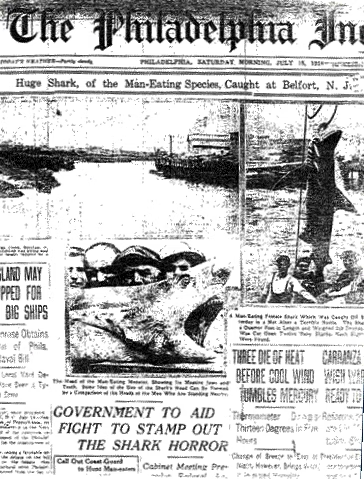
Photo: Staff of the Philadelphia Inquirer., Public domain, via Wikimedia Commons
Benchley, Jaws, and the 1916 Shark Attacks
- Inspiration for Jaws
Peter Benchley, author of the 1974 novel Jaws, stated that the book was not inspired by the 1916 shark attacks in New Jersey. Instead, his interest in shark attacks was sparked by the exploits of Frank Mundus, a Montauk, Long Island sport fisherman, and other shark incidents in Massachusetts and New York waters.
[Source: Interview with Peter Benchley] - Benchley’s Personal Connection to Long Island
Peter Benchley spent considerable time on Long Island, where he developed a fascination with the sea and its creatures, influencing his writing of Jaws.
Source: The Daily Jaws - Misconception About Jaws
A New York Times reporter accidentally spread the rumor that Jaws was inspired by the 1916 attacks. Benchley clarified that this was untrue, but the false information gained traction before it could be corrected.
[Source: The New York Times] - Impact on the Movie
Although Benchley’s novel was not based on the 1916 attacks, Steven Spielberg’s 1975 film adaptation blended fiction with real-life fear, drawing heavily from the events in New Jersey to heighten the story’s suspense. The attacks also inspired a wave of scientific research into shark behavior, leading to advancements in marine biology that influenced the portrayal of sharks in the movie.
Source: National Geographic
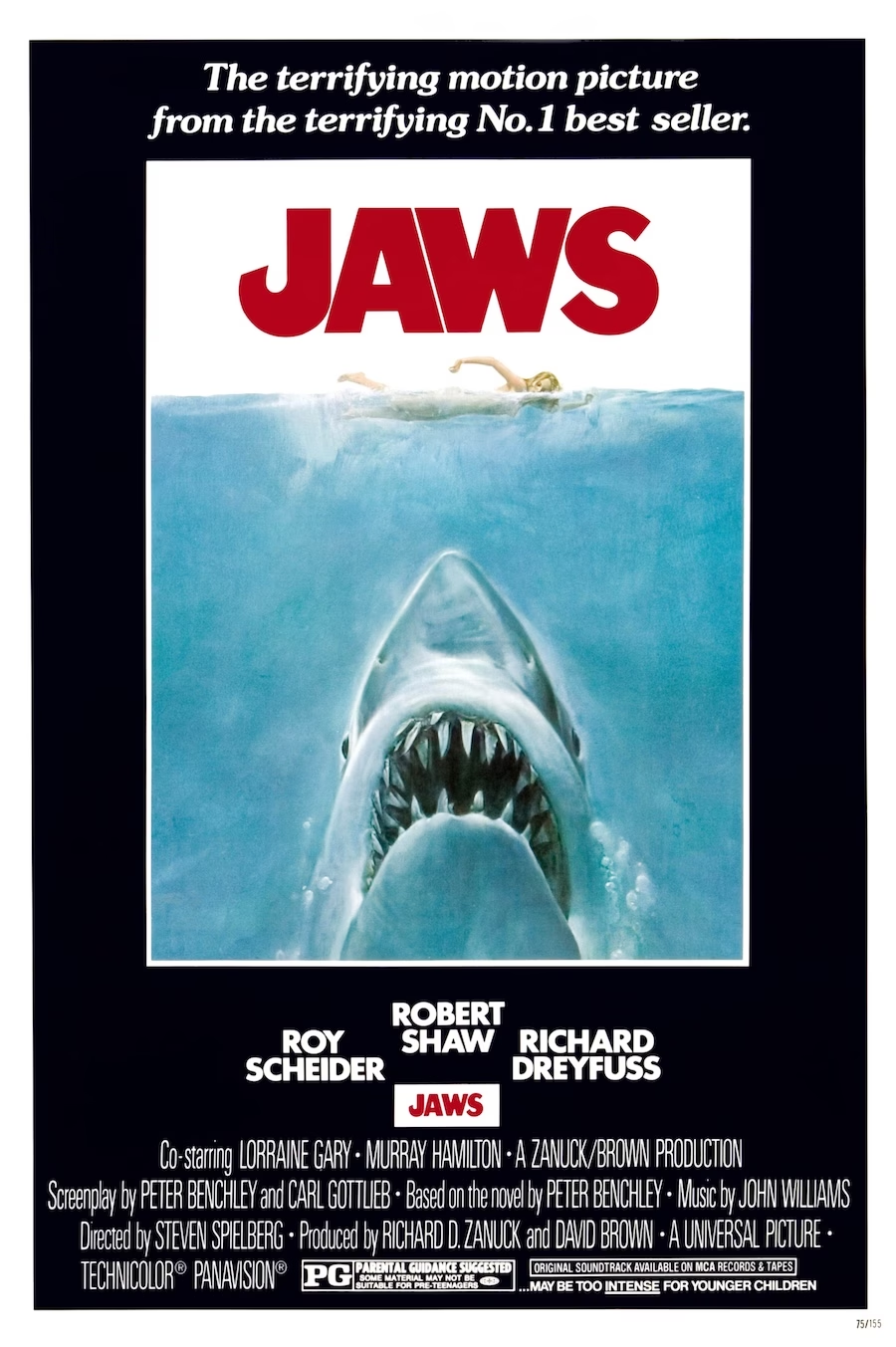
Similarities Between Jaws and the 1916 Shark Attacks
- Fatalities
In Jaws, the shark kills four people, including a victim in an estuary—similar to the attack in Matawan Creek in 1916.
Source: Cape Cod Times - Dismissal of the Threat
The mayor of Matawan initially denied the attacks were happening, paralleling the mayor of “Amity,” the fictional town in Jaws, who downplayed the shark threat.
Source: Cape Cod Times - Historical Warning
In Jaws, the fictional ichthyologist Matt Hooper references the 1916 attacks, warning that similar incidents could occur again.
Source: Cape Cod Times - Shark Hunts
Following the Matawan attacks, crazed men led a shark hunt, much like the money-hungry fishermen in Jaws.
Source: Cape Cod Times
Long Island’s Connection to Jaws
- Inspiration for Quint
The character Captain Quint was inspired by Frank Mundus, a Montauk fisherman who caught a 4,500-pound great white shark in 1964. Mundus was a big game fisherman and shark conservationist.
Source: Newsday Archives - Mundus’s Iconic Vessel
Mundus’s boat, the Cricket II, was specifically designed for big-game shark fishing and became an icon of Montauk. Its stability and design were ideal for the challenging Atlantic waters off Long Island.
Source: Power and Motoryacht - Amity Island’s Origins
The fictional Amity Island was originally based on a coastal town on Long Island. However, director Steven Spielberg decided to film on Martha’s Vineyard instead. The movie’s success led to three sequels, which were also filmed on Martha’s Vineyard. - Cultural Impact on Long Island
The 1916 shark attacks and the subsequent release of Jaws led to a surge in local folklore and stories about shark encounters off the Long Island coast.
Source: Smithsonian Magazine
The shark attacks of 1916 left an indelible mark on the northeastern coastline, including Long Island. While the most infamous incidents occurred in New Jersey, the fear and heightened awareness spread far and wide, influencing beach culture and safety protocols for decades. Long Island’s shores played a role in the larger story, reminding us that even our local waters can harbor surprising connections to history’s most fascinating tales.
For more crazy facts about Long Island history, people, and places, keep exploring and share your favorites with friends!
Cover photo: Mile Ribeiro.

